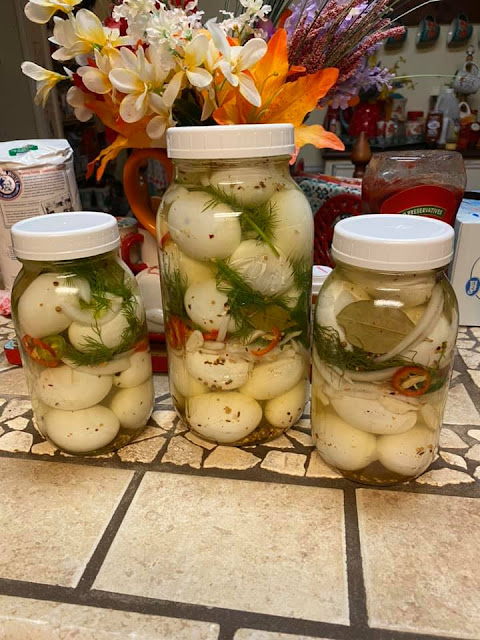Preserving Perfection: Mastering the Art of Dry Canning Potatoes for Long-lasting Convenience and Flavor
Preserving the harvest is a time-honored tradition, allowing us to enjoy the flavors of fresh produce throughout the year.
Today, we'll delve into the world of dry canning potatoes—an excellent method for maintaining their texture, taste, and nutritional value. With just a few simple steps, you can transform a bag of Idaho russets into a bounty of perfectly preserved spuds, ready to enhance your favorite dishes at a moment's notice. Join us as we explore the art of dry canning potatoes, and discover how this process can elevate your culinary experience while ensuring you have a readily available supply of this versatile vegetable.
Recipe: Dry Canned Potatoes
Ingredients:
- - 10 pounds of Idaho russet potatoes
- - Water for boiling
- - Canning salt (optional)
Equipment:
- - Large pot for boiling
- - Canning jars with lids
- - Pressure canner
- - Jar lifter
- - Potato peeler
- - Knife or vegetable chopper
- - Potato scrubber (optional)
Instructions:
1. Preparing the Potatoes:
- Start by washing the potatoes thoroughly to remove any dirt or debris. A potato scrubber can be useful for this step but is optional.
- Peel the potatoes using a potato peeler to remove the skin. Alternatively, you can leave the skin on for added texture and nutrients, as long as you wash them well.
- After peeling, dice the potatoes into uniform-sized pieces. Aim for approximately 1/2 to 1-inch cubes, ensuring they are all similar in size.
2. Blanching the Potatoes:
- In a large pot, bring water to a rolling boil.
- Carefully add the diced potatoes to the boiling water and blanch them for about 3 to 5 minutes. Blanching helps preserve the color, texture, and flavor of the potatoes.
3. Cooling and Draining:
- Once blanched, promptly transfer the potatoes to an ice bath to halt the cooking process. This step helps retain their firmness.
- Allow the potatoes to sit in the ice bath for a few minutes until completely cooled.
- Drain the potatoes thoroughly to remove excess moisture. Pat them gently with a clean kitchen towel if needed.
4. Packing the Canning Jars:
- Sterilize the canning jars and lids according to the manufacturer's instructions.
- Pack the cooled and drained potatoes tightly into the sterilized jars, leaving about 1 inch of headspace at the top.
- If desired, add a pinch of canning salt to each jar to enhance the flavor. This step is optional.
5. Sealing the Jars:
- Wipe the jar rims clean to ensure a proper seal.
- Place the lids on the jars and tighten the bands until they are finger-tight, ensuring they are not overly tightened.
6. Pressure Canning:
- Follow the instructions provided with your pressure canner for safe and proper usage.
- Place the filled jars in the pressure canner, ensuring they are not touching and there is enough water to create steam.
- Process the jars at the recommended pressure and time for your specific altitude and canner type. Typically, potatoes are pressure canned at 10 pounds of pressure for 35 minutes (adjust for altitude if needed).
7. Cooling and Storage:
- Once the processing time is complete, turn off the heat and allow the pressure canner to cool naturally.
- Once the pressure has fully released, carefully remove the jars using a jar lifter and place them on a towel-lined surface.
- Let the jars cool undisturbed for 12 to 24 hours until they reach room temperature.
- Check the seals by pressing down on the center of the lids. If the lids do not flex or pop, the jars are properly sealed.
- Store the sealed jars in a cool, dark place. Properly sealed and stored, the dry canned potatoes can last up to 1 year.
Dry canning potatoes is a rewarding and practical way to preserve this beloved vegetable's freshness and taste.
By following the simple steps outlined in this recipe, you can create a stockpile of conveniently canned potatoes that are ready to be incorporated into a variety of dishes. From hearty stews and creamy mashed potatoes to crispy roasted delights, these preserved spuds will lend their deliciousness to your meals with ease. Embrace the joy of preserving and savor the flavors of freshly dry canned potatoes throughout the year. Enjoy the convenience, versatility, and long-lasting quality that dry canning brings to your culinary endeavors.





















Comments